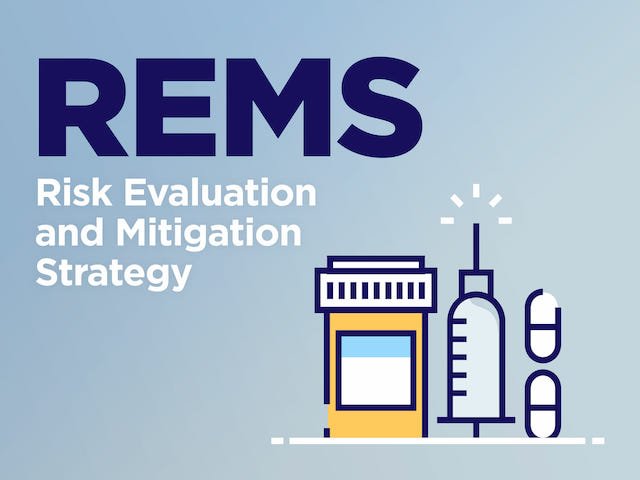A Short Brush Up on Risk Evaluation and Mitigation Strategy
I noticed that the FDA has just approved another Risk Evaluation and Mitigation Strategy (REMS) for a pharmaceutical drug so I thought a blog on this topic would be useful.
Our regulatory compliance coursework on communication of risk mentions the government’s REMS program. The following information comes from our training module and from online resources.
REMS is a drug safety program that the U.S. Food and Drug Administration (FDA) can require for certain medications with serious safety concerns to help ensure the benefits of the medication outweigh its risks. REMS are designed to reinforce medication use behaviors and actions that support the safe use of that medication. While all medications have labeling that informs health care stakeholders about medication risks, only a few medications require a REMS. There are currently 66 drugs with a REMS.
As required by the Food and Drug Administration Amendments Act (FDAAA), drug and biotech manufacturers must submit a REMS to FDA prior to product approval, or after the product is marketed. REMS require companies to monitor and proactively manage safety risks as part of a New Drug Application (NDA) or Biologic License Application (BLA) submission, or at other stages in the product’s life cycle. FDA can delay approval if it deems the submitted REMS to be insufficient or declare the product misbranded (and thus ineligible for marketing) if the company fails to follow the approved REMS.
REMS materials are not developed for promotional purposes, nor are they designed to entice patients or doctors to use the product more. They are intended to focus on the risks of product and to mitigate those risks by making sure intended audience understands risks and knows how to reduce them.
REMS may require the drug manufacturer to develop materials for patients, such as Medication Guides, which are the handouts for patients distributed with many prescription medicines. These handouts contain FDA-approved information in patient-friendly language that can help inform patients about how to use a medication and avoid serious adverse events. Medication Guides are provided to the patient at the time the medication is dispensed or administered. All Medication Guides are approved as part of a drug’s labeling, but only a small number of Medication Guides are included as part of REMS.
Other provisions of REMS program include Restricted distribution arrangements, setting limitations on what kind of pharmacies may dispense drug and Establishing programs, such as patient registries, where patients using certain drugs are tracked.

